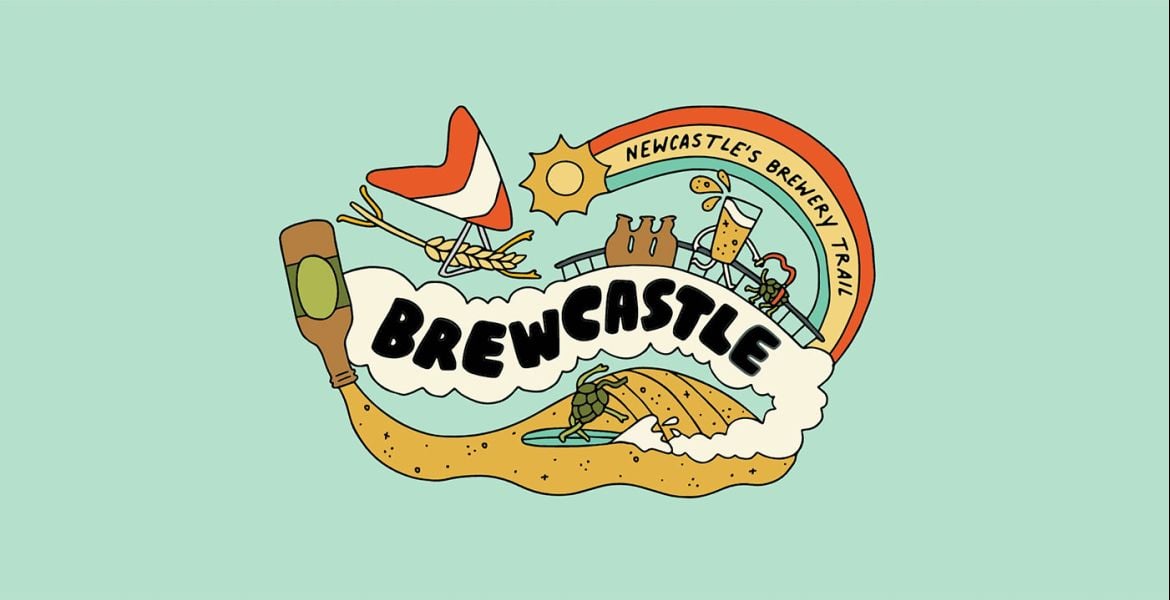In April, we spoke to some of the local brewers trying to break into China's growing craft beer market. Here, in his follow up article, Ross Lewis takes a look from a different perspective, speaking to prominent Chinese beer writers and a Chinese expat living in Melbourne who is looking to smooth the path for Australian brewers.
What does the craft beer scene in China look like? What message do Aussie brewers need to get across? And how can they gain a slice of the pie currently being gobbled up by their American peers?
Ke Dong was on a mission. He’d been tasked by his friend in Melbourne, beer aficionado Christopher Yifei Li, to find Australian beer in China.
As an agricultural specialist from Xi’an at the eastern end of the Silk Road, Dong was required to travel to large cities like the capital, Nanning, Wuhan, Guangzhou and Shanghai for his work. And, since he spent his downtime trying new brews in a variety of Chinese craft beer venues, Christopher turned him into a brand spy, assigned the task of finding evidence of Aussie beers within the territories he visited.
But whether it was the tiny laneway bars like those near Beijing’s Confucius Temple or the home of the Master Gao Brew Garden in Nanjing, it was proving to be a Mission Impossible.
“Dong is a close mate of mine, who consumes about 150 litres of beer a year,” says Christopher, an IT professional who moved to Australia a decade ago and is now working on exporting local brews to his former home. “He has never encountered an Aussie craft beer, even when he was deliberately seeking one.”
It’s a tale that may shine a light on the greatest hurdle facing the Australian beer industry’s attempt to secure a slice of what will be a very lucrative pie as China’s middle classes showing an increasing appetite for quality, flavoursome beer.
Last month, The Crafty Pint highlighted local operators’ attempts to break into what is estimated to be a $750 million a year imported beer segment in the world’s most populous nation. Since running the article, we’ve been seeking another perspective: what do the Chinese want from their premium beers and can Australia produce the goods?

The answer, as things stand, is that if the Aussies have got what the Chinese desire – like we think we have – then our Asian cousins certainly don’t seem to know it yet. Indeed, according to Dezhu Zhao, editor-in-chief of leading online Chinese beer resource, imbeer.com, we have plenty of work to do to teach his fellow beer drinkers the land down under can satisfy their thirst for New World brews.
“The importation of Australian [beer] was not continuous and resulted in low availability in the market. Therefore, Australian beer has low cognition and attention [in China],” says Zhao.
“The existing Australian beers in the market are usually lacking characters, whether [in] the beers themselves or the packaging designs. Some of the beers even have past the prime drinking date. These are the main reasons behind its mediocre reputation.”
Ouch! Not the summation any Aussie foreign trade official wants to read – or report to those back home.
CUTTING THROUGH
So how does Australian craft beer undertake a re-education campaign and get a strong foothold in what is already the busiest brewing market in the world? Lion has a toe in the water in Shanghai where Little Creatures champions the cause, as it does via its separate Creatures brewpub operation in Hong Kong. Meanwhile, a recent Austrade visit by fellow breweries waving the Boxing Kangaroo flag – one that was followed by KAIJU! securing an order for a range of beers, including its 10 percent ABV Betelgeuse – has stoked interest from others keen to join the export push.
However, trade websites and Facebook aren’t going to be enough to create a presence. Traditional tools such as Facebook, Instagram and YouTube are blocked, stifling the vibrant online beer community’s impact.
“I was shocked when my mates told me people in China rarely browse websites nowadays. The only source of information now is Wechat, a significant information ecosystem,” says Christopher who, last year, set up an Australian beer distribution network with fellow Chinese stakeholders.
“There are a number of craft beer media in China, they play roles of educator, advertiser, even retailer. They all have a Wechat public platform account for publishing to their subscribers. The content would be similar to what we see on the beer media in Australia, such as industrial news, new beers, events info, beer reviews, and beer culture related articles etc.
“Often, pubs and tap houses have their own Wechat platform account to publish advertisements, tap takeovers, and even heat maps (for numbers of people in one spot) of their venues.”
Jill Tang and Di Di are behind TheBrewGirl media and promotional operation in China and have had exposure to Australian beer through visits to Melbourne’s Good Beer Week.
But Jill, who goes by the title Chief Sexy Officer at TheBrewGirl, believes traditional media techniques that have been successful here won’t necessarily work in her market.

“There are no beer-focused third party websites who solely focus on craft beer sector, understand or care about each brand and are bilingual,” says Jill.
“As much as digital marketing is largely applied by all businesses, in China you will still have to budget for traditional promotion channels and offline engagement. And it’s expensive and also takes time.”
FOLLOW THE AMERICANS
So what is the message our brewers need to get across if they’re to cut through?
Copy what the US has done. It is the Americans who have caught the eyes, noses and taste buds of China’s emerging middle class of around 250,000 million people. And more are coming.
“There are reasons [why] the US products have high market share,” says Zhao.
“When the US beers [mostly IPA] were first introduced to China, beer media laid great emphasis on the aroma. Because the aroma was the most distinctive element from what they had at the time [Snow, Tsingtao] and US IPA happens to have the most prominent aromas.
“The US products quickly took in the craft beer market and have been maintaining high market share since. If Australian craft beers can also give the growing Chinese drinkers big hoppy aroma and flavour, I believe the beers would be easily accepted and gain great popularity.”
Certainly, it was IPA that stoked Jill’s interest in beer choice at the turn of the decade. Suddenly, for Chinese drinkers in their mid to late 20s, there was flavour in their glasses – cans are still considered to be domain of beer geeks – and a growing number could afford to pay the higher prices compared to traditional commercial brands such as Tsingtao, Beijing Yanjing and Snow, which command around 50 percent of the country’s beer sales.
Now small Australian breweries must let the Chinese know they have the best possible ingredients and are making the quality beers they seek. That said, if successful, being able to create a big enough supply for China will also test many minor Australian setups and would likely be beyond the resources of many. Thus, pooling efforts might be a way to meet demand.
As Christopher points out, Australian Bureau of Agriculture and Economics statistics indicate 60 percent of Australian barley exported to China is used in the brewing industry so there is support for our primary commodities both at major and minor brewing levels in China. That appreciation now needs to transfer to finished products.
“Our grain, hops and water will surely be attractive to the Chinese drinker,” says Christopher. “Emphasising ingredients is what I would go for as Australian food has been enjoying high regard. It also needs education to let them know our beer can have so many characters and so much flavour they would truly enjoy.”
QUALITY IS KEY

Another obstacle is ensuring the beers get to China in good condition – an issue for any exporter, regardless of location. As Jill warns, a lot of marketing and education can go down the brewhouse drain if Australian producers don’t ensure their beer travels well.
“'Always cold chain' is a fantasy in China,” says Jill of the approach taken to domestic beers. “A fantastically brewed IPA can reach the consumer tired and old if it is not well taken care of. But a professional distributor that really loves your beer will take care of it like it is his baby.”
As a result, prices might be high but there are enough Chinese happy to pay.
“Quality is the key,” says Christopher.
And, if they can stoke interest and get good beer to drinkers in good condition, the higher prices paid for craft beer in China give Australian breweries the chance to eek acceptable export margins.
What’s more, the domestic artisanal brewing sector in China isn’t expected to grow significantly over the next few years. The surge will come from overseas brands, either through imports, contract brewing by foreign brewers or collaborations: New Zealand’s Epic and Chinese operation Harvest Brewing teamed up for a joint release last year. Meanwhile, Big Beer is lurking too – AB InBev recently bought leading Shanghai craft brewery Boxing Cat.
Jill would like to see a brewpub on every Shanghai corner but accepts that, for a while at least, it will be overseas beers fuelling the crafty flame.
She says: “With beer tycoons like AB InBev and Heineken acquiring craft beer brewers and selling them in China through aggressive marketing strategies that target the millennial, we expect to see a much faster growth in the next decade and possibly a different craft beer scene than anywhere else in the world.”
Read part one of Breaking China.
About the author: Ross Lewis is editor of beer website, The Sip.
Photo at the top is of Bravo Bar in Guangzhou.



















